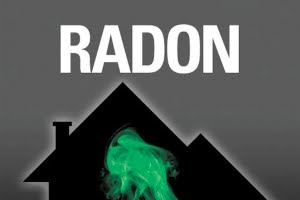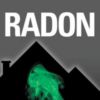
Do You Know Where Radon Comes from?
Let’s discuss Radon
First, I want to talk about what Radon is. When we say the word Radon, what we’re referring to is a gas that’s actually produced by the disintegration of Uranium. Essentially it’s a radiation gas, and it’s pretty much found everywhere. It occurs naturally in the soil and the earth all over the place. It primarily comes out of rocks, essentially, because that’s where we’re going to find the uranium products. Depending on where we’re at geographically, it does matter.
There are places where it’s more prevalent than others and a lot of people think here in Florida that that it’s really not occurring in the soil. But that’s true only to some extent. We do find it in the soil to a degree, and there are pockets where it’s found more readily. But more importantly, the Radon source in our homes and buildings is coming from the building products that are being used. We’re using a lot of concrete products in our buildings here- block and slabs and stones; and all those things contain radiation products. Depending on where they were sourced from and where we’re putting in to the home, the levels will vary.
Radon levels vary greatly from location to location, so the only way to know what the levels are is to test. Radon is ubiquitous in its nature: it doesn’t have any taste or odor or color, so it’s very difficult to identify or even know if you’re subject to harmful levels.
So Who Is Keeping Track?
Our government monitors it. There is currently a rating for Collier County and approximately 20% of the homes right now- or 20% of the land in Collier County- is rated at “above” the safe level of what is measured in picocuries per liter (pCi/L) of air. This standard measure is very small: it’s a trillionth per two radiation units per minute. The standard for the cutoff line is 4.0 pCi/L. Anywhere in that area is going to be a risk zone. To say that 3.9 is safe and 4.0 is not is kind of silly but that’s where we draw the line. At 4.0 they say you must put a mitigation system in to accommodate for it.
I have found that about one in five homes we test come up positive for it, requiring a mitigation. There’s no real rhyme or reason to it. I’ve seen it in multiple story condos, say a 10th floor unit, and the one unit will have it and the adjoining unit will not. It’s very dependent on pipe chases and materials used in in the unit. Things like granite counter tops can be very reactive; if we put a Radon testing unit in a home and we set it near a granite counter top it will come back positive every time. Placement of the devices is extremely important to ensure accurate results. That’s part of why state licensing is required to perform Radon testing; there are several environmental companies I work with that allow them to do the Radon testing.
For more details, the full Podcast episode, and the full transcript go to:

